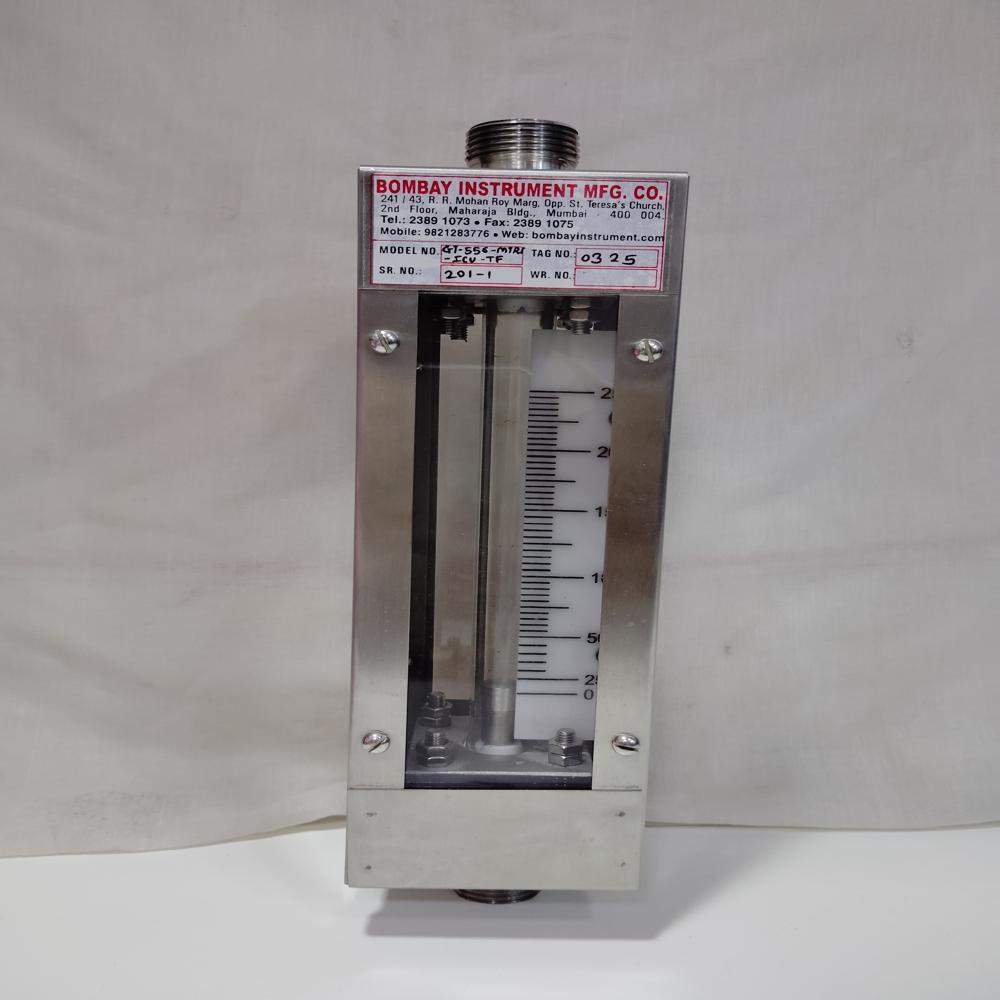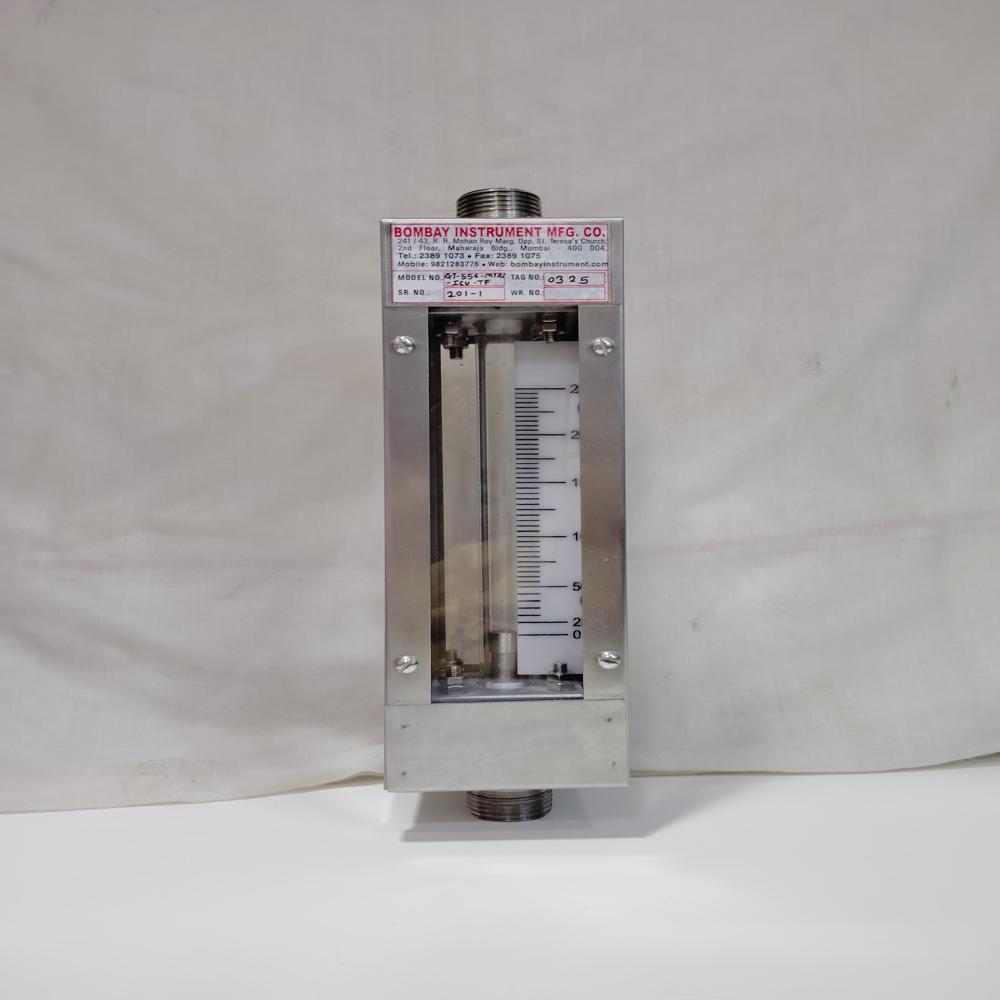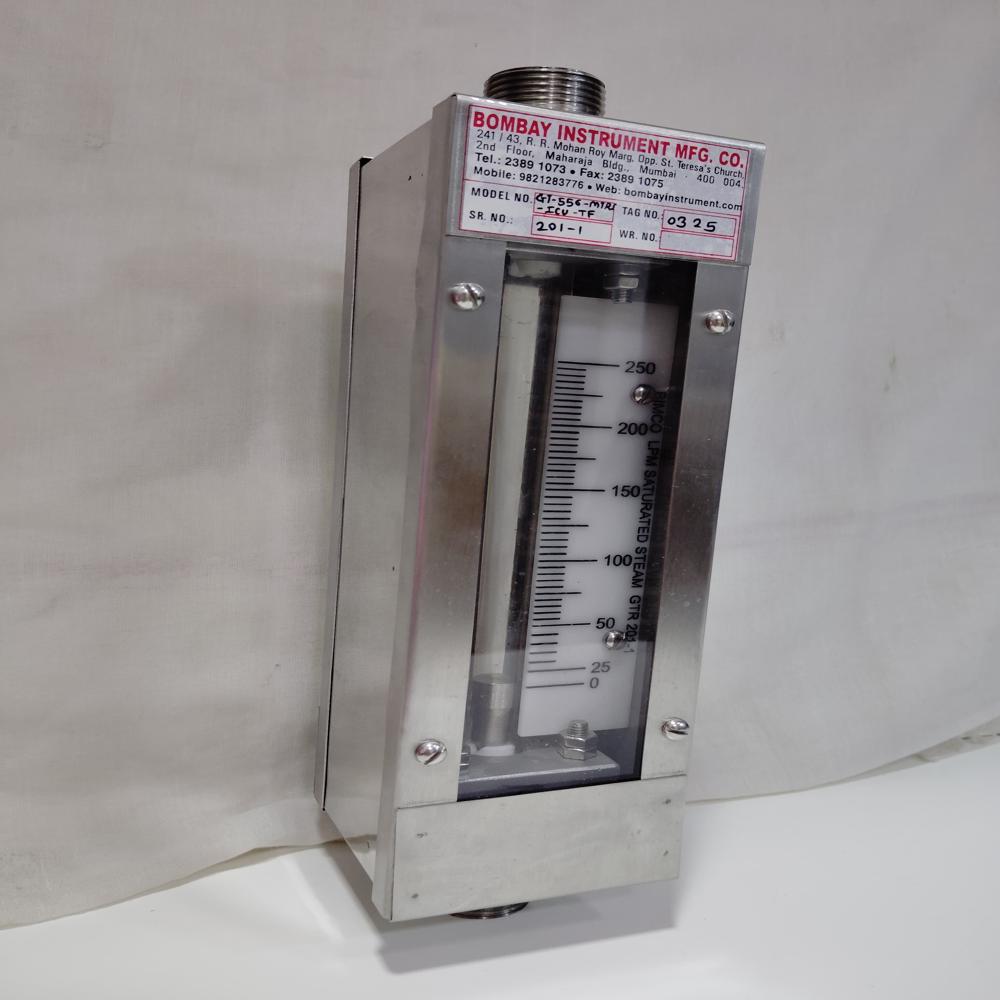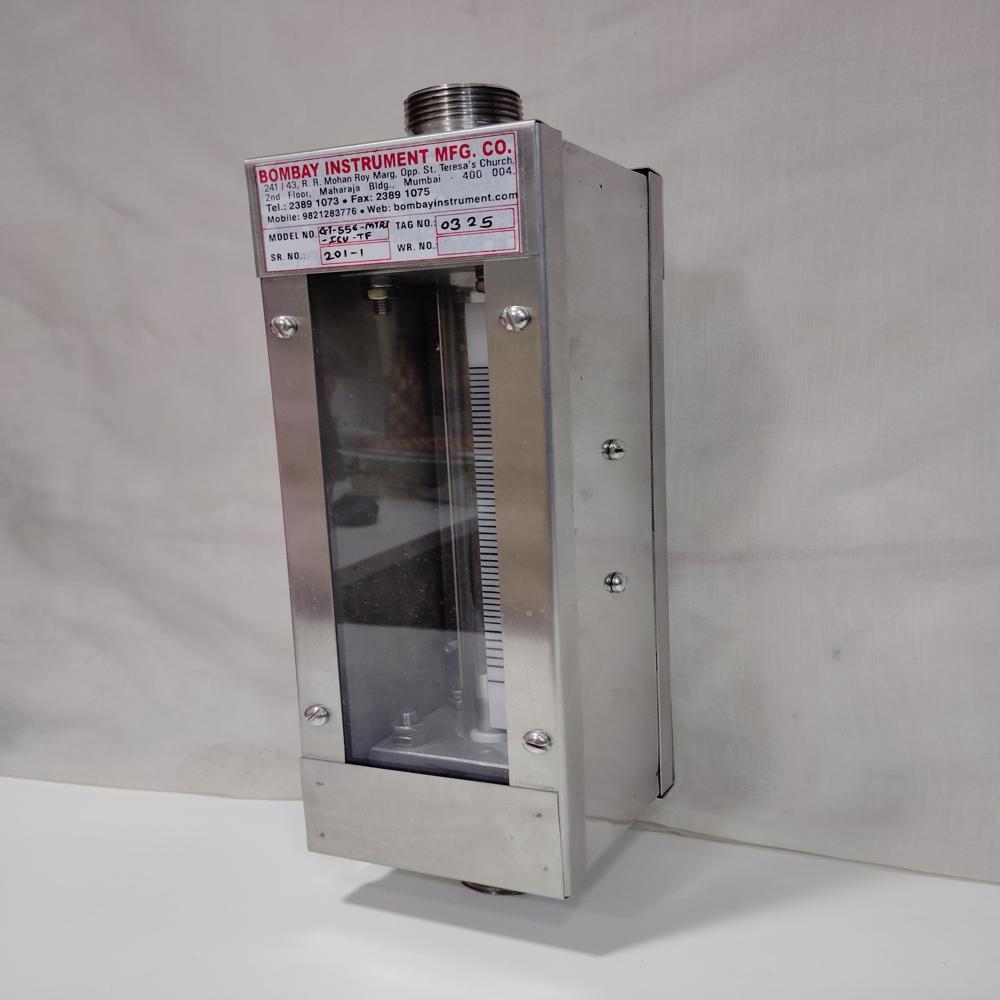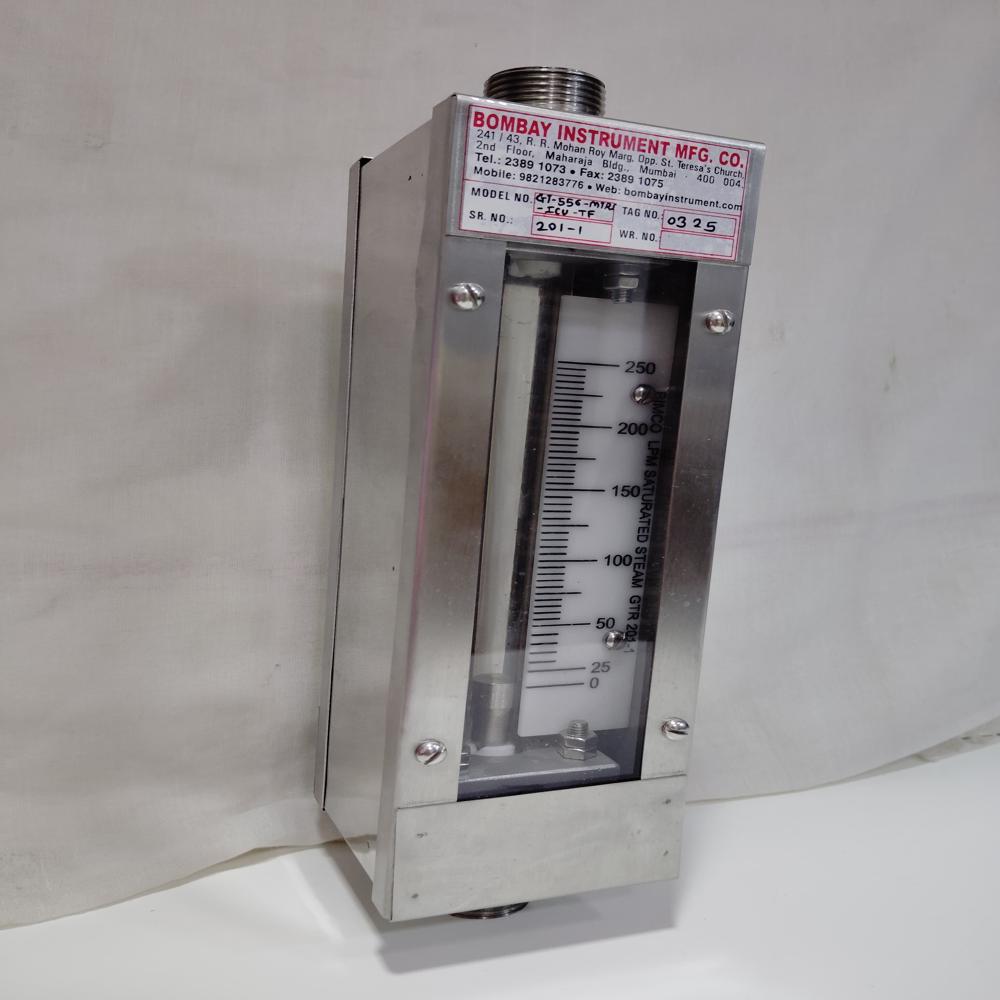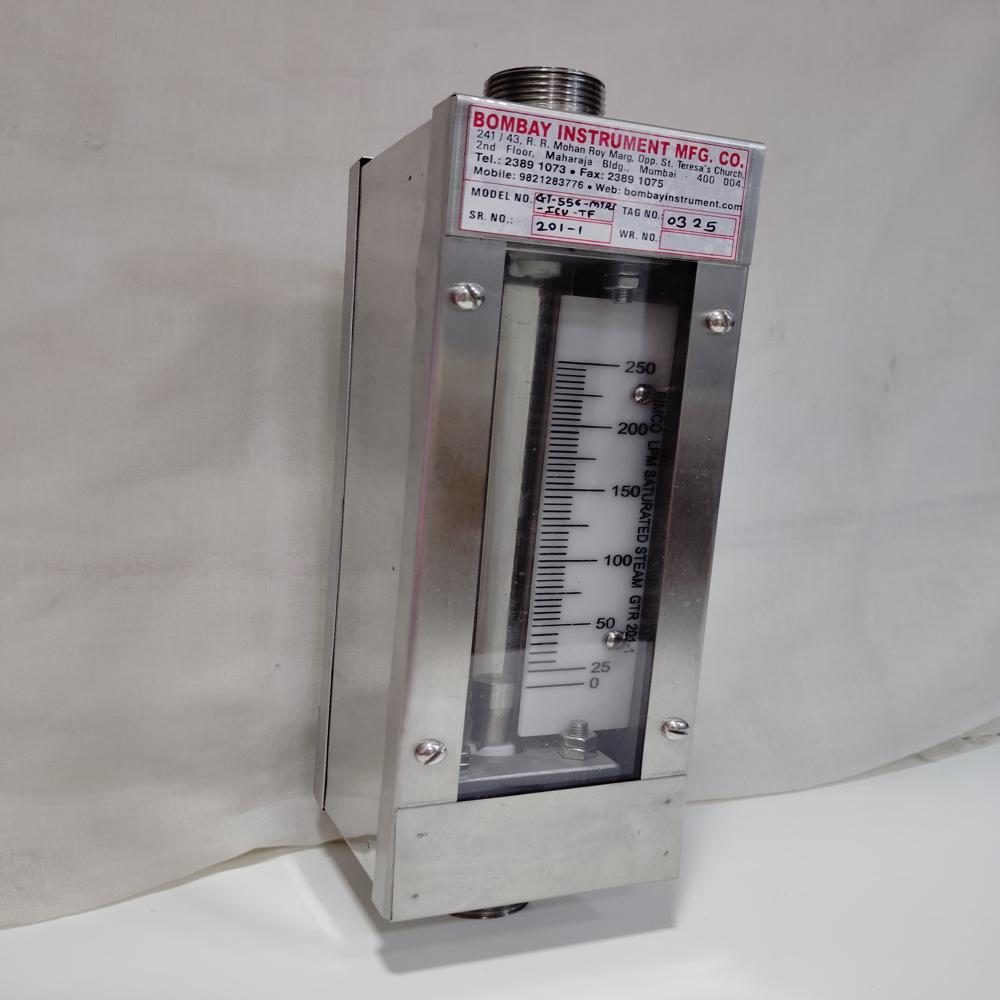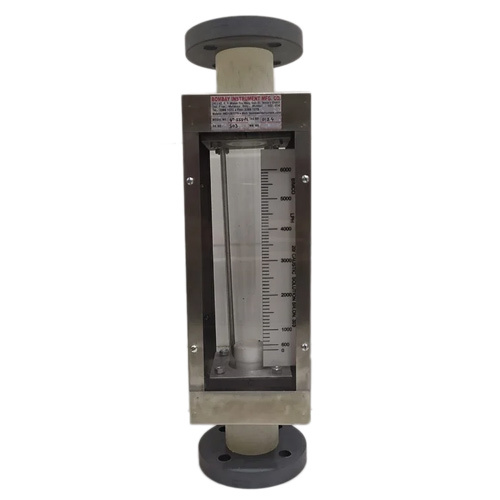GLASS TUBE ROTAMETER
Product Details:
- Capacity 500 Kg/hr
- Voltage 12 Milliampere (mA)
- Application WATER
- Operating Voltage 12 Volt (V)
- Port Size 2"
- Gas Pressure 10 Bar
- Power Supply 124 V DC
- Click to View more
GLASS TUBE ROTAMETER Price And Quantity
- 1 Number
- 27500.0 INR/Number
GLASS TUBE ROTAMETER Product Specifications
- WATER
- 12 Milliampere (mA)
- 500 Kg/hr
- 3 Meter (m)
- 3 Kilograms (kg)
- 5 SEC
- 12 Volt (V)
- ROTAMETER
- 5 Seconds
- 20 Celsius (oC)
- 24 Volt (v)
- 3 Kilograms (kg)
- 2"
- 10 Bar
- METALIC GREY
- SS316
- 0 - 100
- 124 V DC
- MEASURING FLOW PRESSURE
- 1
- 5 Centimeter (cm)
- 50 Celsius (oC)
- 2 %
- NA
GLASS TUBE ROTAMETER Trade Information
- MUMBAI
- Cash in Advance (CID)
- 1000 Number Per Year
- 4 Week
- Sample costs shipping and taxes has to be paid by the buyer
- BOX PACKING
- Asia Middle East Africa
- All India Maharashtra
- ISO 9001 : 2015
Product Description
A glass tube rotameter is a type of flow meter used to measure the flow rate of liquids and gases in various industrial processes. The device operates on the principle of variable-area flow measurement, where the flow rate is determined by the position of a float within a conical glass tube.
Key Components:
-
Glass Tube: A vertical, tapered glass tube that is usually clear for easy visual observation of the float's position. The taper creates a changing cross-sectional area as the flow increases.
-
Float: A buoyant object (often made of metal or plastic) that rises or falls inside the tube based on the flow rate. The float's position corresponds to the flow rate, with higher flow rates causing the float to rise to a higher position.
-
Scale: The tube is calibrated with a scale, often marked in units such as liters per minute (LPM) or cubic meters per hour (m/h), to read the flow rate based on the position of the float.
-
Inlet and Outlet: The fluid enters through the bottom of the tube (the inlet) and exits through the top (the outlet). As the fluid moves upwards, it carries the float, with its position indicating the flow rate.
Operating Principle:
The working principle of a glass tube rotameter is based on the balance between two forces:
-
The upward force caused by the flow of the fluid.
-
The downward force due to the weight of the float.
As the flow rate increases, the upward force increases, causing the float to rise until the forces are balanced. The float then stabilizes at a height that corresponds to the flow rate. The position of the float on the scale can be read directly to determine the flow rate.
Applications:
-
Industrial Flow Measurement: Used in various industries, including chemical, water treatment, pharmaceuticals, and food processing, for monitoring and controlling the flow of liquids and gases.
-
Laboratory Use: In laboratories for measuring low-flow rates of gases and liquids.
-
Medical Devices: Sometimes used in equipment like oxygen meters to measure gas flow in healthcare settings.
Advantages:
-
Simplicity: Glass tube rotameters are easy to use and maintain, with no need for electrical connections.
-
Visual Measurement: They offer a direct, visual reading of the flow rate.
-
Versatility: Suitable for both liquid and gas flow measurement, with a variety of scale ranges.
Limitations:
-
Fragility: Being made of glass, these rotameters are more susceptible to breakage compared to other types of flow meters.
-
Accuracy: While useful for many applications, their accuracy may be lower than more advanced types of flow meters, particularly in very high or low flow conditions.

Price:
- 50
- 100
- 200
- 250
- 500
- 1000+
Other Products in 'Glass Tube Rotameter' category
 |
BOMBAY INSTRUMENTS MFG. CO./ AADESHWAR OVERSEAS
All Rights Reserved.(Terms of Use) Developed and Managed by Infocom Network Private Limited. |





